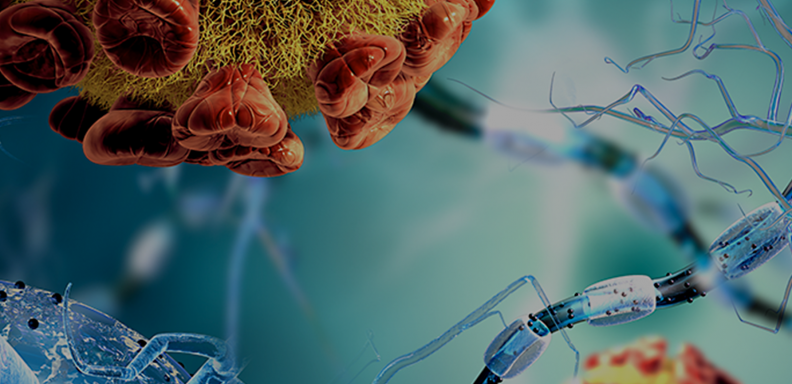In a recent study published in Science Advances, researchers at the University of Chicago Medicine Comprehensive Cancer Center developed a nanomedicine that increases the penetration and accumulation of chemotherapy drugs in tumor tissues and effectively kills cancer cells through the activation of the stimulator of interferon genes (STING) pathway.
Challenges with chemotherapy
Although chemotherapy is the primary treatment option for most cancer conditions, it presents challenges once administered because much of the drug is quickly broken down by enzymes in the body or quickly cleared by the kidneys before it reaches the tumor tissue. Moreover, a large amount of the drug in the system reaches healthy tissues, causing toxic side effects.
To overcome this challenge, the scientific community has made incredible efforts to improve drug delivery strategies, including the packaging of chemotherapy drugs into nanoparticles. These particles, which are so small they are invisible even under a microscope, can carry chemotherapy agents directly to the tumor. While promising as a method to deliver drugs, nanomedicine still needs significant improvement in its ability to deposit the drug into tumor cells.
Wenbin Lin, PhD, the James Franck Professor of Chemistry at the University of Chicago, is a pioneer in developing nanoparticles for medical imaging and drug delivery. In the recent study, he reports a novel approach to enhance nanomedicine’s effects in pre-clinical tumor models.
STING improves drug delivery
Chemotherapy drugs in cancer treatment reach the targeted cells by crossing over from blood vessels into the neighboring tumor tissue. Cancer cells often recruit nearby blood vessels to grow and invade other tissues. These hastily created vessels are often abnormal, creating irregular blood flow patterns, thus making it difficult for a drug to penetrate the tumor tissue effectively.
Tumor cells interact with many other neighboring cells, including endothelial cells of blood vessels, fibroblasts, and stromal cells, which make up the tumor microenvironment (TME). STING is highly expressed on various cells of the TME, including endothelial cells. STING activation disrupts the tumor vasculature—the arrangement of blood vessels—and increases the leakiness of blood vessels in the TME. Lin and his team leveraged the unique property of STING activators, also called STING agonists, by delivering them, along with chemotherapy drugs, with the idea that STING activation increases vascular permeability and thus will enhance the chemotherapy’s effects.
“We have discovered a novel way to use STING agonists to disrupt tumor vasculature to basically enhance drug delivery to tumors without enhancing them to other tissues,” said Lin.
Due to its rapid degradation, however, administration of STING agonists into the blood or directly into tumor tissues has shown poor retention and failed to achieve desired outcomes. To overcome these issues, researchers in the current study have designed a nanoscale coordination polymer (NCP) that encapsulates both the STING agonist, 2′,3′-cyclic guanosine monophosphate–adenosine monophosphate (GA), and the chemotherapy drug oxaliplatin (OX), OX/GA.
“STING agonists haven't worked very well by themselves, but by creating nanomedicine, I think this could also make STING agonists work alone or in combination, which I think is an important contribution,” said Ralph Weichselbaum, MD, the Daniel K. Ludwig Distinguished Service Professor, Chair of Radiation and Cellular Oncology at UChicago, and senior author on the new study.
STING in immune system activation
There are multiple ways to evaluate cancer drugs in pre-clinical mouse models, such as growing subcutaneous tumors underneath the skin or implanting cancer cells in an organ, called orthotopic tumors. The research team evaluated the antitumor effects of OX/GA in subcutaneous, orthotopic, spontaneous (cancer development without any agent/implantation), and metastatic tumor models and found strong antitumor effects with large tumor growth inhibition and high cure rates.
“We noted that radiation activates STING like a pathogen because of the double-stranded breaks introduced by radiation and, importantly, that STING agonists might be useful in cancer therapy,” said Weichselbaum.
In addition to increased permeability, STING also plays a significant role in immune system activation. The STING pathway gets activated by invading pathogens like bacteria, viruses, and abnormal DNA of cancer and drives inflammatory response through release of cytokines that activates immune cells like phagocytes to clear off unwanted cells. STING activation also increases the infiltration of T cells and turns immunologically “cold” tumors to so-called “hot” or inflamed tumors, enabling them to be more responsive to immunotherapy agents like immune checkpoint inhibitors.
This work came out of a long-standing collaboration between the UChicago’s Physical Sciences Division and Biological Sciences Division. “This is one of the highlights of my career to be able to work with Dr. Lin because I have hugely benefitted from his expertise in engineering nanoparticles to solve clinical problems,” said Weichselbaum.
“The next steps are to do more validation studies and prepare for scaling the technology and hopefully testing it in humans,” said Lin.
The study “STING activation disrupts tumor vasculature to overcome the EPR limitation and increase drug deposition,” was supported by a grant from the National Institutes of Health. Additional UChicago authors included Xiaomin Jiang, Taokun Luo, Kaiting Yang, Morten Lee, Jing Liu, Langston Tillman, and Wenyao Zhen.



